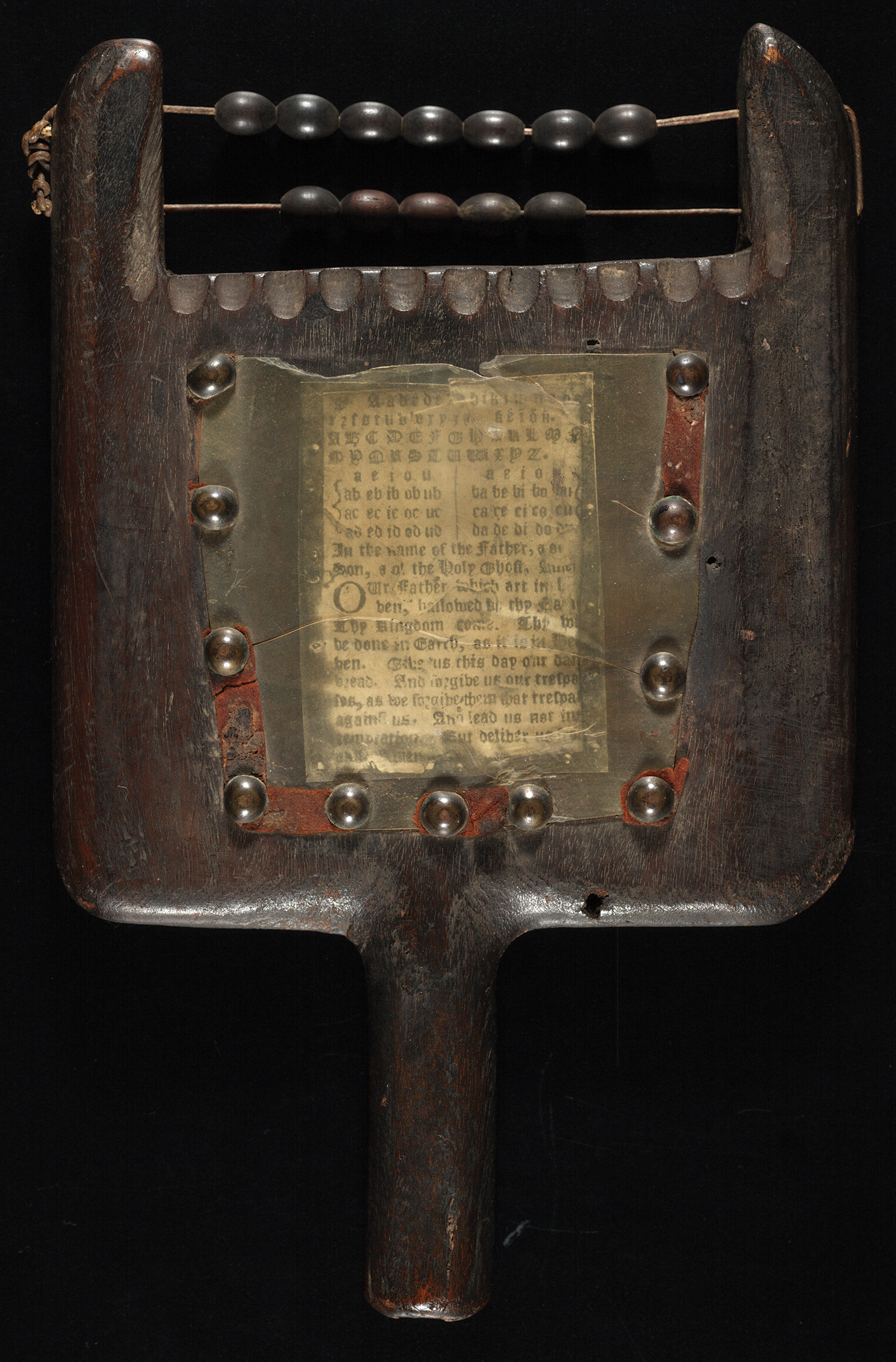Right to the Source
Information at Your Fingertips
The Science Teacher—November/December 2019 (Volume 87, Issue 4)
By Stephen Wesson
18th-century mobile devices!
When you need a mobile device for reading, reference, and performing calculations, what do you reach for? If you were a student in the 18th century, you might have picked up a small contraption made of wood, wire, and animal horn—your handy hornbook.
Before the rise of large-scale print publishing, hornbooks were familiar learning tools in classrooms across Europe and North America. A typical hornbook was a small, paddle-shaped piece of wood or leather with a single sheet of paper on the front, protected by a thin, transparent sheet of horn. That paper page was packed with some of what was deemed to be the most important information a young learner would need: the alphabet, numbers, Bible verses, and perhaps a few common words for beginning readers, like cat and bat.
A hornbook had to be sturdy, as each one would likely be passed down through several generations of students. Despite this, many were decorated, some with religious scenes carved into the surface, and some even with gold inlay. Many hornbooks sported an abacus at the top, so that students could perform quick arithmetic calculations as they worked.
When compared to the mobile device a typical student of today might use in the classroom, the hornbook certainly comes up short in computational firepower and network connectivity. But both objects can tell students a great deal about what information and what skills were considered important for learners to master in their respective eras. After you ask students what they can or could learn from the mobile devices of the 21st century and the 18th, ask them which object they think will last longer. You might also challenge them to consider who decided what information was available on the hornbooks and how such decisions were made, then compare their answers to such decisions as they relate to modern mobile devises
Related Student Explorations
- The history of education
- Primers and textbooks
- Learning technologies through history

About the Source
Featured in this article is a wood hornbook from the 18th century, possibly from the United States. This hornbook includes the alphabet in upper and lower cases, as well as vowels, the Lord’s Prayer, and ligatures—that is, letters that were joined together. It also has a two-line abacus, with twelve beads on lengths of wire. The original object is in the Rare Book and Special Collections Division at the Library of Congress, and is available online at https://www.loc.gov/resource/rbc0001.2006juv00160/.This hornbook is part of an online collection of Selected Children’s Books from the Library, which includes dozens of books for young readers from centuries of U.S. history, as well as several items that students might not recognize as books at first.
Literacy Technology High School


